
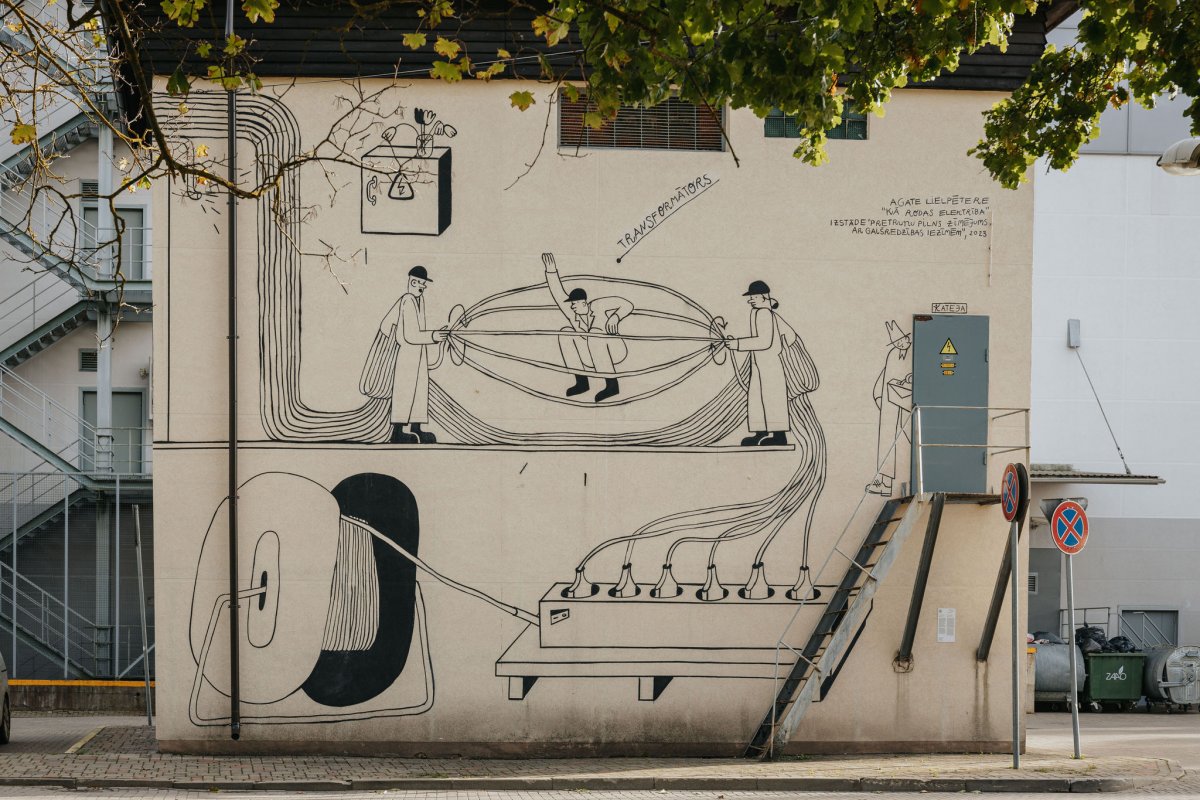
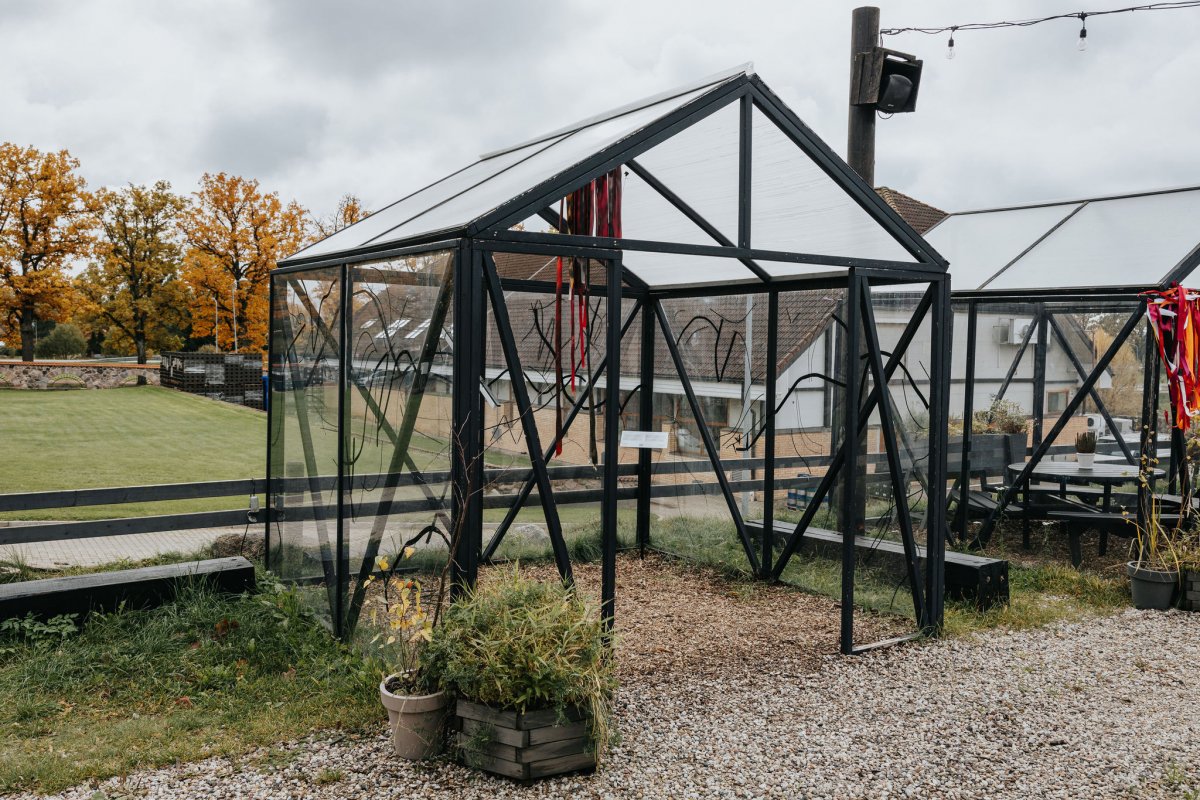


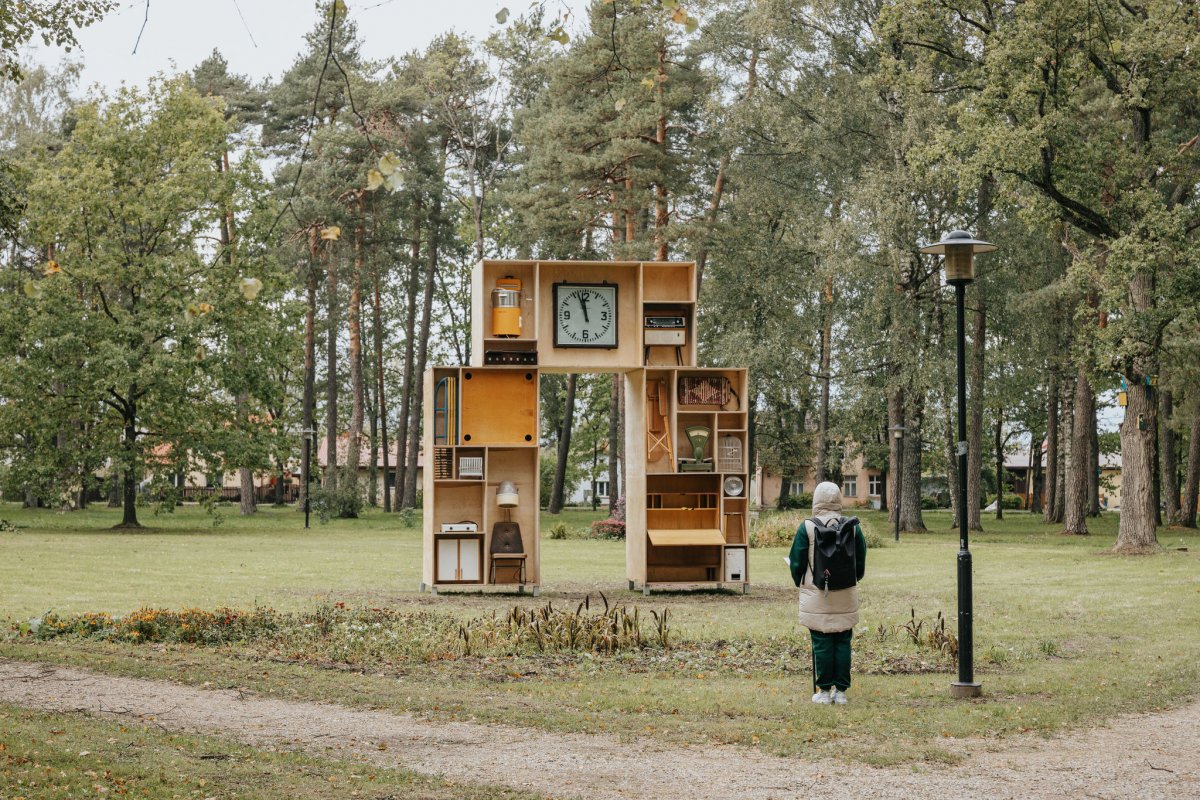
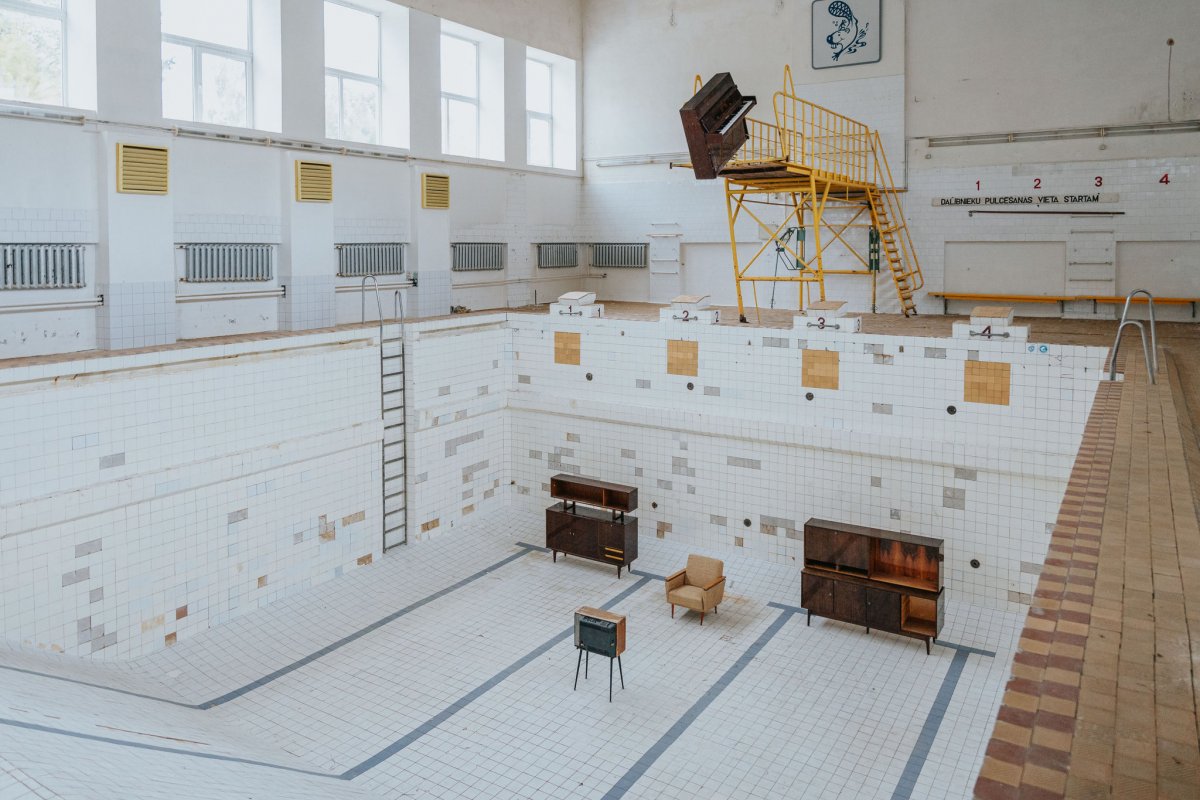

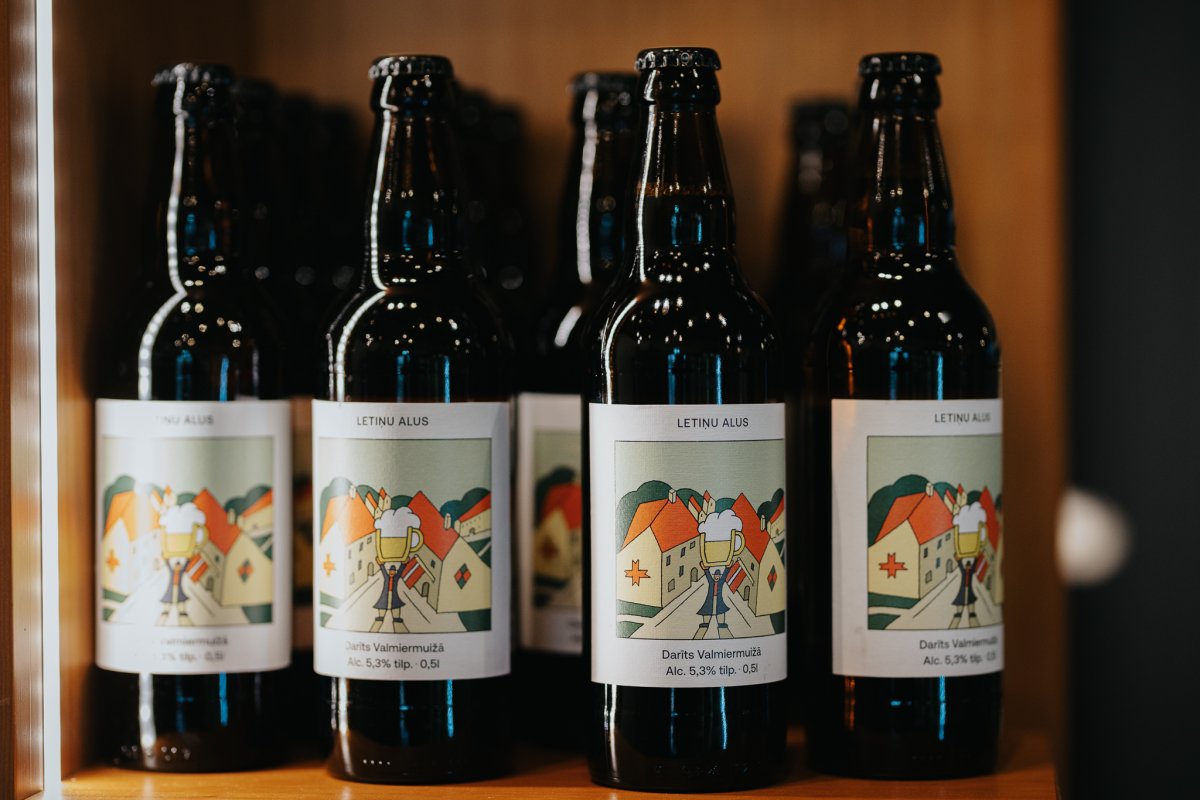

07.10.2023.-10.11.2023.
Valmiera
The exhibition "A visionary drawing riddle", organized by the Latvian Centre for Contemporary Art, featured eight Latvian artists who were invited to reflect on and interact with the works of Māris Bišofs. The exhibition was on view in locations throughout Valmiera’s urban environment – from the walls and roofs of buildings to the shelves of some stores.
THE EXHIBITION MAP IS AVAILABLE HERE
The central axis around which the exhibition revolved is the artist Māris Bišofs, whose art is recognized by many but who nevertheless remains a recluse in the Latvian art scene. Born in Rūjiena, he later became a citizen of the world – spending time in Israel, France and the USA – before returning to Latvia, where he has now been living for the past 20 years. Bišofs still draws every day, predicting the future in his works, as well as commenting with sarcasm and humour on current events in Latvia and the wider world.
“In the present day I don’t call them caricatures anymore – I actually hate that word. Cartoonists are not great artists. They draw a single freaky character of their own all their lives. My works are based on history, previous art. No one stands apart from previous art. This is how art accumulates and develops,” says Māris Bišofs about his works.
The curators of the exhibition, Solvita Krese and Māra Žeikare, invited eight artists – Ēriks Božis, Kaspars Groševs, Ernests Kļaviņš, Agate Lielpētere, Marija Luīze Meļķe, Ingrīda Pičukāne, Krišs Salmanis and Vivianna Maria Stanislavska –, as well as the writer Jānis Joņevs, to interact with Bišofs’ creative practice and to create new artworks that will complement the urban space.
“His goal is to find the upside-down and to show it to people who may not see it themselves. Bišofs provokes viewers to step out of their usual perceptions of the world. By combining several themes, unexpected results are produced, and Bišofs is a master at clearing the image of everything superfluous,” explains Solvita Krese. Along with his drawing, text is of great importance in Bišofs’ works. “Bišofs’ texts are like a bouncy word game in which daily observations and references to art history and current events alternate with biographical facts and personal reflections, making more than one reader laugh out loud,” Krese points out.
The eight invited artists were given a rather difficult task: to create new works inspired by and interacting with the creative practice of Māris Bišofs and towards which viewers would not be able to remain indifferent. Krišs Salmanis’ witty and ironic intervention on the roof of Valmiera Culture Centre briefly and accurately summarised the feelings of cultural workers observing the industry’s struggles in the field of real estate, Ingrīda Pičukāne reviewed Bišofs’ drawings from a woman’s point of view, Vivianna Maria Stanislavska focused on the consequences of the climate crisis, and Ēriks Božis turned absurd situations from Bišofs’ two-dimensional drawings into installations in the urban environment. Agate Lielpētere imagined what is hidden behind the door of a power transformer booth, and put an ironic spin on stereotypes of national identity. The lines of Kaspars Groševs’ impossible objects wereturned into spatial drawings in Bišofs’ style, while, with the help of animation, Ernests Kļaviņš explored how a complex drawing turns into a simple one and how many lines are needed to represent the author’s initial intention. Marija Luīze Meļķe focused on a completely traditional medium and format; drawings by her and Māris Bišofs were regularly published in the local newspaper Liesma. Writer Jānis Joņevs, for his part, has created texts inpired by Bišofs, that were published in the local advertising newspaper "Tava Izvēle".
Māris Bišofs (1939)
Māris Bišofs is a Latvian artist and illustrator who was born in Rūjiena and in the 1970s emigrated abroad with his family. He gained recognition in Israel, where his books of drawings The Exhibition, Encounters and Sexercises were published; in France, where he worked at the international artist center Cité Internationale des Arts; and in the USA, where he later lived. In 2003, Bišofs returned to Latvia. The artist’s drawings have been published in newspapers and magazines including The Washington Post, The New York Times, The Wall Street Journal, The Boston Globe, Yediath Ahronoth, Haaretz and Rolling Stone. In 2015, he created the visual design for the 12th Baltic International Art Triennial in Vilnius. Bišofs has had works published in multiple books and has had solo exhibitions in Israel, Germany, Belgium, the USA and Latvia.
Ēriks Božis (1969)
Ēriks Božis works in the genres of conceptual art, photography and video. Since 1995, he has participated in more than 40 exhibitions, in Latvia and abroad, including Manifesta, the Rauma Biennale, the opening project of the Stockholm Museum of Modern Art, and the international contemporary art festival Survival Kit. In 2009, he was one of the eight Purvītis Award finalists, and he also represented Latvia at the Venice Architecture Biennale in 2008. Several of Božis’ artworks are in the collections of the Latvian National Museum of Art and the future Latvian Museum of Contemporary Art.
Kaspars Groševs (1983)
Since 2014, Kaspars Groševs has been the curator of the artist-run gallery 427, which he also co-founded. As an artist interested in the processuality of artistic, curatorial and sound practices, and the merging of their boundaries, Groševs actively participates in exhibitions, performances, and cultural events in Latvia and internationally. The artist works with experimental electronic music, and in his works sound often appears as an organic addition to visual methods. In 2020 and 2023, he was nominated for the Purvītis Award.
Ernests Kļaviņš (1977)
Ernests Kļaviņš is a Latvian painter, animator, and comic artist who studied painting at the Art Academy of Latvia. The artist’s political cartoons are regularly published in the magazine Ir. Kļaviņš’ paintings and animations have been exhibited in many group and solo exhibitions, in Latvia and abroad. His last solo exhibition, Treat for the Gourmet, was held in 2021 at the Alma gallery in Riga. Kļaviņš was one of the creators of the internationally popular and acclaimed video game The Case of the Golden Idol.
Agate Lielpētere (1995)
Agate Lielpētere is a Latvian artist and illustrator who currently lives and works in Ljubljana, Slovenia. Having graduated with a bachelor's degree from the Department of Graphic Art at the Art Academy of Latvia, she is currently mainly engaged in painting. The artist’s works are characterized by their light-hearted humour and focus on the study of topics such as the search for national identity and social equality. Since 2017, Lielpētere has actively participated in exhibitions both in Latvia and elsewhere in the world. The artist emphasizes that her characteristic humour is a “family thing,” and therefore “they” are to blame for it.
Marija Luīze Meļķe (1997)
Marija Luīze Meļķe is a poet whose texts have been featured in many different publications. She has published a collection of poetry, co-authored a script for a film in which she played the leading role, played several smaller roles in other cinematographic works, participated in the creation of various plays, written editorials and a little bit of prose, and periodically drawn cartoons for publications. All of these activities involve directly experiencing and observing both internal and external events, and trying to re-express what has just happened.
Ingrīda Pičukāne (1978)
Ingrīda Pičukāne is a graduate of the Department of Visual Communication at the Art Academy of Latvia and the Animation Department at the Estonian Academy of Arts. Her video works and installations have been shown at multiple editions of the contemporary art festival Survival Kit, and her graphic stories have featured in international comics exhibitions. She has also created illustrations for children's books and designed several books. In recent years, the artist has focused on feminist art, drawing comics with female characters, creating audio-visual performances, and publishing the feminist zine Samantha. Currently, Pičukāne also works as an animation and comics teacher at the Riga Art and Media Technical School.
Krišs Salmanis (1977)
Krišs Salmanis studied at the Department of Visual Communication at the Art Academy of Latvia and at the Academy of Media Arts Cologne in Germany. Since 2001, he has participated in group and solo exhibitions at the Latvian Centre for Contemporary Art, Alma Gallery, Kim? Contemporary Art Centre, the Centre for Contemporary Art in Vilnius, Art in General in New York, the A4 Art Museum in Chengdu, China, and elsewhere. He received the 13th Tallinn Print Triennial Award in 2004, the 19th Bremen Award for Video Art in 2010, the Purvītis Award in 2017, and the Spēlmaņu Nakts (“Night of Players” Award in 2019. Salmanis also represented Latvia at the 55th Venice Biennale.
Vivianna Maria Stanislavska (1992)
Vivianna Maria Stanislavska is an artist active mainly in the fields of illustration, comics and animation. The artist received her bachelor’s and master’s degrees from the Department of Graphic Art at the Art Academy of Latvia. In 2016, she won the Jānis Baltvilks “Jaunaudze” (“Coppice”) award for her first illustrated book Skaļā klase (“The Loud Class”), which has also been translated into English and Estonian. Works by the artist have been published in Latvia and abroad and have also appeared in self-published magazines. This spring, in cooperation with Laura Melne and the Latgalian cultural group Volūda, she published the first comic in Latgalian. Since 2020, she has been teaching animation at a vocational high school in Riga.
Jānis Joņevs (1980)
Jānis Joņevs is involved in all kinds of writing. Prose (books “Doom 94” (Jelgava 94), “Tiger” (Tīģeris), “December” (Decembris), ""Proza"" (Prose)), theatre (“Rīga. Urban Myths” (Rīga. Urbānie mīti), “Beastly Love” (Zvērīgā mīla)), journalism (oh, this and that) and more.